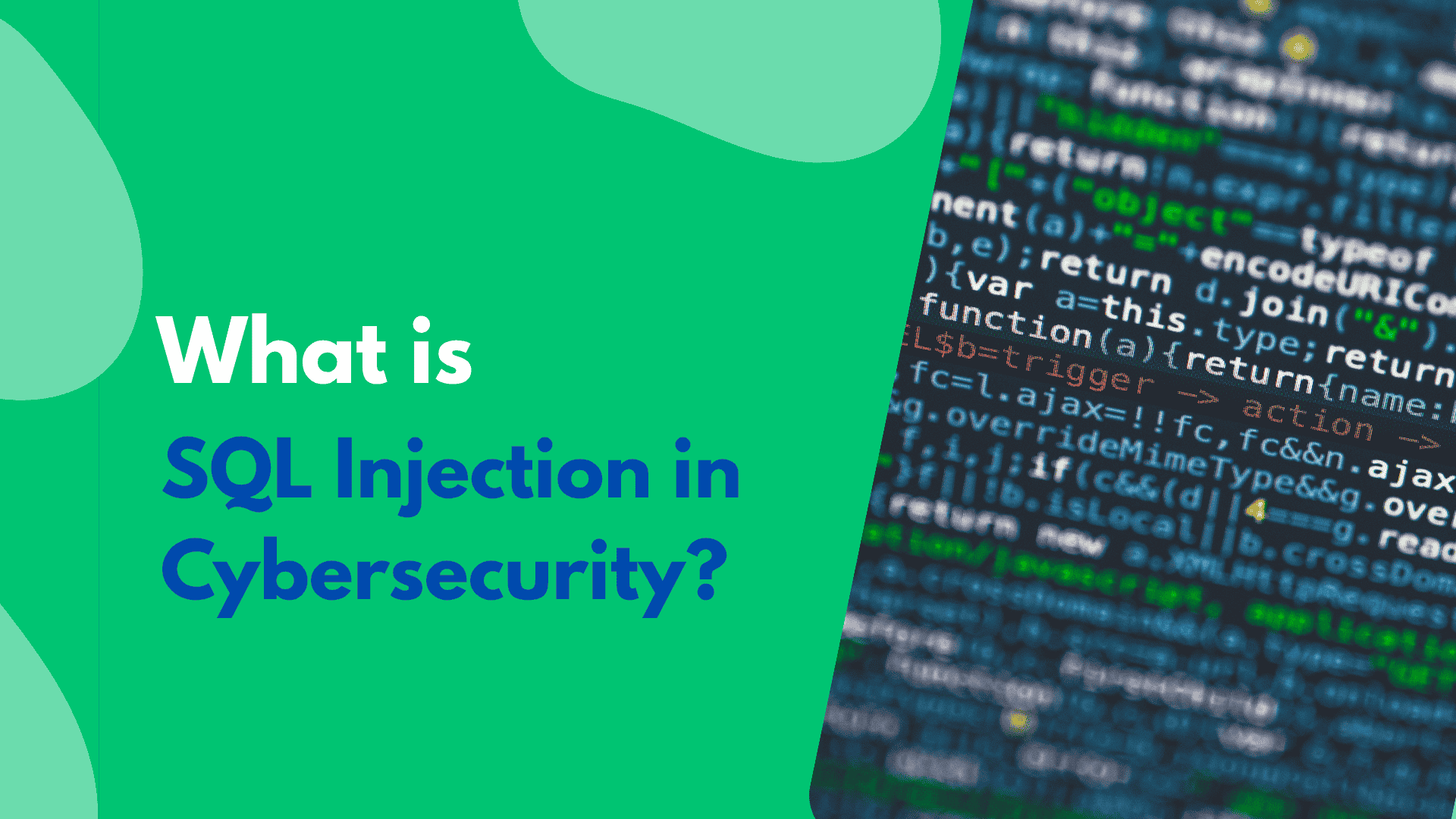
SQL injection, also known as SQLi, is one of the most prevalent and dangerous risks to databases and web applications. In SQLi attacks, hackers inject malicious SQL code into vulnerable application inputs to manipulate or access databases unauthorizedly.
In this article, we have explained SQL injection attacks in cybersecurity and shared tips on how to prevent them. We have also shared some tools and practices to detect SQL injection vulnerabilities in your application, and find out if your application was compromised in a SQL attack.
Furthermore, if you are interested in learning more about such cyber threats, you can check out our informative cyber security courses online, where we have explained various cyber threats and their prevention.
What are SQL Queries?
SQL queries are commands used to interact with databases, allowing users to retrieve, insert, update, or delete data.
For example:
This command will return all details about the user named "john_doe".
Web applications use SQL queries to manage user data, such as profile information, uploads, comments, and more. Properly constructed SQL queries ensure efficient data handling and security, but vulnerabilities can be exploited through SQL injection attacks
What is SQL Injection?
SQL injection (SQLi) is a cyber attack technique where attackers insert malicious SQL code into input fields to manipulate a backend database. This allows unauthorized access, modification, or deletion of sensitive data, posing a significant threat to web application security.
SQLi vulnerabilities can expose confidential company information, user records, and private customer details, making it crucial to secure input fields and validate user inputs to prevent such attacks.
Did you know?
The 2017 SQLi attack on Equifax resulted in a financial loss of approximately $1.4 billion.

Types of SQL Injection
There are several common types of SQL injection, including in-band SQL injection, inferential or blind SQL injection, and out-of-band SQL injection.
1. In-band SQL Injection
In-band SQL Injection, attackers exploit vulnerabilities in an application's input fields to send malicious SQL queries directly and get results through the same communication channel. There are two primary variations:
● Error-based SQL Injection: It is a technique of forcing the database to generate error messages by injecting faulty SQL queries. The error messages often reveal useful information about the database structure and configuration.
● UNION-based SQL Injection: This method combines the output of several searches into a single HTTP response by taking advantage of the SQL UNION operator. Sensitive database information is revealed by attackers by analyzing this combined response.
2. Inferential (Blind) SQL Injection
Inferential or Blind SQL Injection occurs when attackers cannot see the database's response directly. Instead, they infer data by observing changes in the application's behavior or response time. Although slower, these attacks can be just as damaging. There are two types:
● Boolean-based Blind SQL Injection: The attacker sends queries that result in true or false outcomes, then monitors changes in the HTTP response to infer database information.
● Time-based Blind SQL Injection: The attacker examines the time the server takes to respond to certain queries. Variations in response time help determine whether a query’s condition is true or false.
In blind SQL injection, the application's responses do not reveal direct query results or error messages. However, attackers can still infer information using techniques such as:
1. Injecting Boolean conditions and analyzing variations in the application's output
2. Using time-based SQL statements to observe processing delays
3. Triggering out-of-band network interactions to extract data indirectly
These methods are more advanced but effective in environments with limited feedback.
3. Out-of-band SQL Injection
Out-of-band SQLi occurs when attackers rely on specific database features, like DNS or HTTP requests, to extract data. Unlike other methods, it does not depend on direct query results or error messages. This type of attack is less common and only possible when certain server functions are enabled, but it can be very effective in bypassing conventional detection methods.
SQL Injection Example
Let us understand with an example, how a SQLi attack is done by a hacker.
In this case, let's assume an attacker discovers that a web application's login form is vulnerable to SQL injection. The form takes a username and a password as inputs and constructs a SQL query to check credentials.
The attack inputs the following into the username field.
This input is designed to manipulate the SQL query. When the application takes this input and makes a query, the query will look like:
Since '1'='1' is always true, the query returns all rows from the users table. Now the attacker has gained illegal access to the application.
Read our article on Cybercrimes in 2025
Which SQL Queries are Vulnerable to SQL Injection?
Although most SQL injection flaws are found in the WHERE clause of SELECT queries, they can also appear in various other parts of SQL statements, including:
● UPDATE statements (in the values or conditions)
● INSERT statements (in the data being added)
● SELECT queries (targeting table or column names)
● ORDER BY clauses (manipulating sorting behavior)
Understanding these varied entry points is critical for comprehensive security testing.
How to Find SQL Injection Vulnerability?
SQL injection vulnerabilities can be detected manually by testing all input points with specific payloads and observing the application's behavior. Techniques include inserting a single quote (') to trigger SQL errors, using inputs that evaluate to true or false to compare responses, injecting Boolean expressions like OR 1=1 and OR 1=2 to uncover logic flaws, and sending time-delay payloads to identify timing-based responses.
Additionally, out-of-band payloads can be used to detect external interactions via DNS or HTTP. For efficient and thorough detection, automated tools like Burp Scanner can streamline the process.
For example:
In this query, $id is the variable that holds user input, while the rest is written by the developer. This combination creates a dynamic SQL statement. If not handled securely, an attacker could input something like:
"10 OR 1=1"
This modifies the query into:
Since 1=1 is always true, the database may return all rows from the table, instead of just one, exposing more data than intended.
Caution: While using conditions like OR 1=1 may seem harmless during testing, be aware that the same input might also be used in other queries within the application, such as DELETE or UPDATE statements. In such cases, a poorly constructed test could lead to unexpected data loss or changes.
How to Prevent SQL Injection Attacks?
The most reliable defense against SQL injection is the use of parameterized queries (also known as prepared statements). Here's an insecure example:
String query = "SELECT * FROM products WHERE category = '" + input + "'";
✓ Statement stmt = connection.createStatement();
✓ ResultSet rs = stmt.executeQuery(query);
Here’s the secure version using prepared statements:
PreparedStatement stmt = connection.prepareStatement("SELECT * FROM products WHERE category = ?");
stmt.setString(1, input);
ResultSet rs = stmt.executeQuery();
Additional measures include:
● Whitelisting acceptable inputs for dynamic parts of queries (e.g., column or table names)
● Avoiding dynamic SQL where possible
● Ensuring that no part of a query string is ever built using untrusted input
● Parameterized queries should be used consistently, regardless of assumptions about the trustworthiness of the input source.
SQL Injection Cheat Sheet (OWASP)
The OWASP SQL Injection Cheat Sheet provides best practices and examples to secure applications against SQL injection. Key highlights include:
● Use of bind variables instead of string concatenation
● Examples of safe queries in different programming languages
● Blacklist vs. whitelist input validation advice
● Recommendations for ORM (Object Relational Mapping) tools
● Prevention strategies specific to stored procedures, dynamic queries, and database functions
● Access it on the official OWASP site: OWASP SQL Injection Prevention Cheat Sheet
Tools for SQL Injection
Various tools help identify and exploit injection vulnerabilities for testing purposes (ethical hacking, red teaming):
Here's a short table summarizing the mentioned SQL injection tools:
| Tool | Description |
|---|---|
| SQLmap | Automates detection and exploitation of SQL injection; supports various DBs and advanced features. |
| Havij | GUI-based tool for basic SQL injection; retrieves data and bypasses logins. |
| Burp Suite | Professional suite with modules for identifying and exploiting injection flaws. |
| OWASP ZAP | An open-source tool for finding SQL injection and web vulnerabilities with automated scanning. |
| NoSQLMap | Targets NoSQL injections, mainly in MongoDB; supports bypass and data extraction. |
| sqlninja | Focuses on SQL Server; allows OS command execution and privilege escalation. |
| Nmap NSE | Uses scripts to detect SQL injection during network scanning. |
What is Second-Order SQL Injection?
Second-order SQL injection occurs when malicious input is stored in the database and later used unsafely in a different query. Although the initial storage appears secure, improper handling during later processing can introduce vulnerabilities. This is particularly dangerous because developers may mistakenly trust stored data as safe.
Conclusion
SQL injection remains a significant cybersecurity threat due to its simplicity and potential for severe damage. It allows attackers to manipulate database queries, leading to unauthorized access, data leaks, or even full system compromise.
This vulnerability often arises from improper input handling in web applications. Understanding different types of SQL injection, such as classic, blind, and second-order, helps in identifying and mitigating risks.
Effective prevention includes using parameterized queries, input validation, and secure coding practices. Regular security testing with tools like SQLmap or Burp Suite further strengthens defenses.

Amar Singh is a senior security architect and a certified trainer. He is currently working with a reputed organization based out of India. His accomplishments include CCNA, CCNP Security, CEH, Vmware, Checkpoint and Palo Alto Certifications. He is holding more than 12 years of experience in Network security domain. In his career he has been ...
More... | Author`s Bog | Book a MeetingFAQ
Comments (0)
Popular posts


What are the Different Types of Network ...
10 Dec 2025
CCNA Exam Fees and Expenses Breakdown
25 Aug 2025
New Cisco CCNA Syllabus for 2025
3 Dec 2025
What is a Cloud Service Provider and Top ...
8 Dec 2025Recent posts

What is Default Gateway and What Does it ...
16 Dec 2025
What is a Hub in Computer Networks and ...
15 Dec 2025
What is Tree Topology in Networking?
15 Dec 2025
What is the Difference Between IPv4 and ...
15 Dec 2025
What is Application Security in ...
15 Dec 2025Upcoming batches
Contact learning advisor










